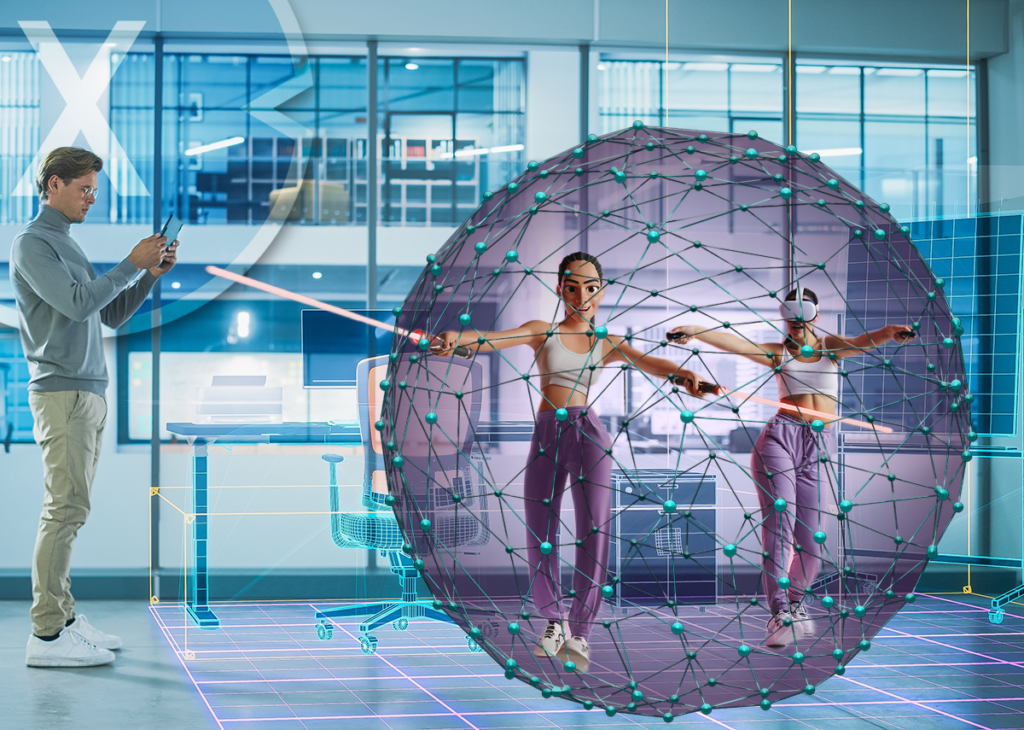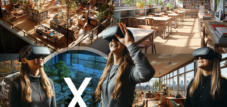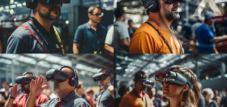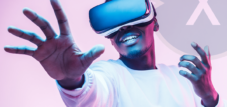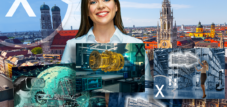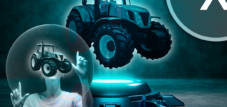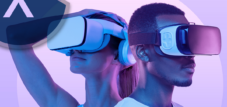Augmented and Extended Reality: Teaching4Future with virtual elements | Modern knowledge transfer in schools and educational institutions
Language selection 📢
Published on: December 3, 2023 / Update from: December 3, 2023 - Author: Konrad Wolfenstein
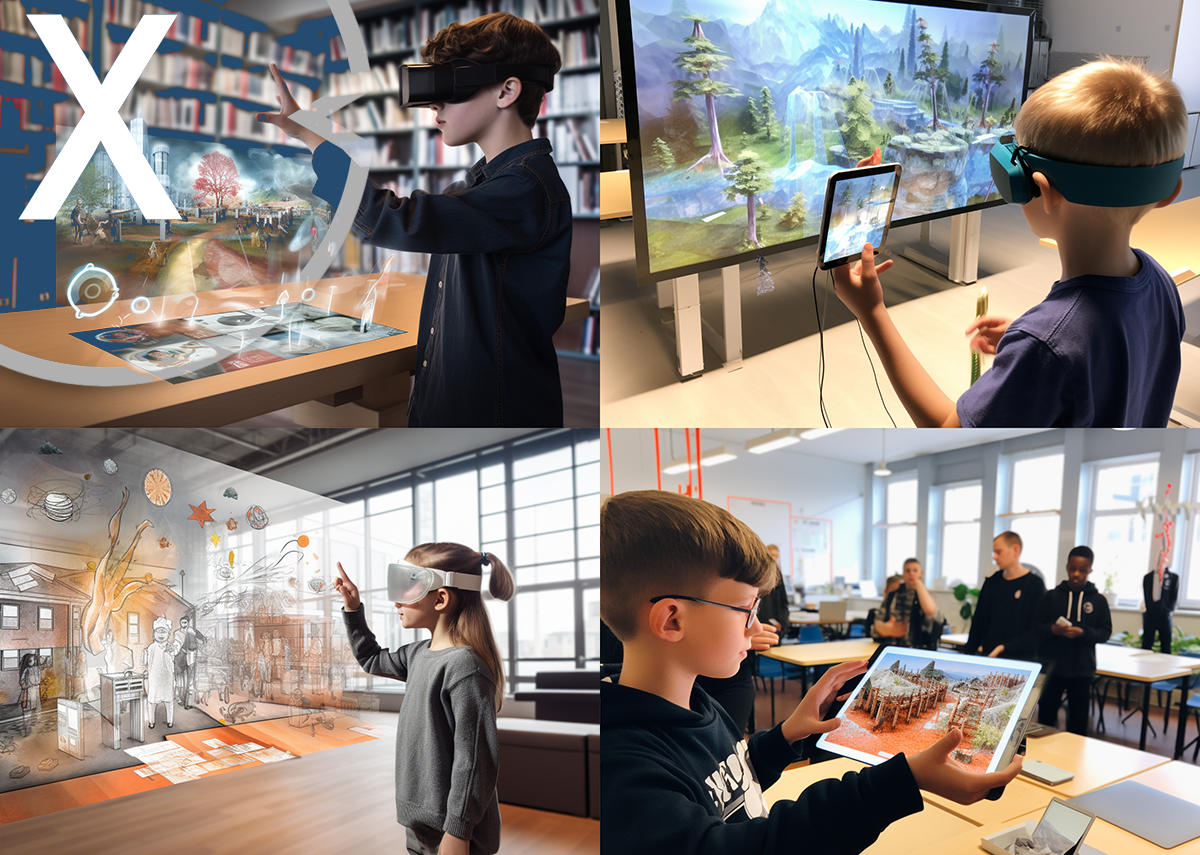
AI & XR 3D Rendering Machine: Augmented and Extended Reality – Teaching4Future with virtual elements – Image: Xpert.Digital
🎓📚 Augmented and Extended Reality: Teaching4Future with virtual elements
💡 “Teaching4future” is an initiative of teachers who work for a sustainable future and environmental education. The term “Teaching4future” is derived from the goal of conveying the skills and knowledge of students in order to participate in sustainable development and to shape a better future.
🎮 Teaching4Future is an innovative approach that promotes the use of virtual elements in teaching using digital media. By using virtual elements, teachers and students can learn and teach in an interactive and engaging way.
🧩 Virtual elements offer a variety of educational opportunities. Students can explore complex topics in virtual environments, conduct experiments and work collaboratively on projects. Through the use of simulations, virtual reality technology and other virtual tools, students can develop a deeper understanding of the learning material.
⏰ One advantage of virtual lessons is flexibility. Students can access the virtual elements from anywhere and learn regardless of time and place. This enables personalized learning and ensures that students with different learning paces can be better supported.
💻 Another important component of virtual teaching is the promotion of digital skills. The use of virtual elements allows students to become familiar with digital tools and develop skills that are essential in the modern digital world.
🙅♂️ Despite the many advantages, there are also challenges when using virtual elements in teaching. Not all students have the necessary technical equipment at home to participate in virtual activities. It is important to ensure that all students have equal access to ensure equal opportunities.
✏️ In addition, the use of virtual elements requires careful planning and preparation on the part of teachers. Suitable virtual resources must be found or created, technical problems must be solved and the educational effectiveness of the virtual elements must be evaluated.
🎆 Virtual lessons with virtual elements have the potential to enrich and expand the learning experience. It enables an interactive and immersive learning environment that meets the needs of students and prepares them for the demands of the digital world.
🌍 An interesting aspect of virtual teaching is the opportunity to raise awareness among students about global issues such as climate change and pollution. For example, virtual environments allow students to take virtual trips around the world and directly confront the effects of climate change.
📚 In addition, virtual elements can also help increase students' interest and motivation in learning. By immersing themselves in virtual worlds, students can understand complex relationships more clearly and become more involved in the learning process.
🤝 Virtual elements can also promote collaboration and exchange between students. You can work together on virtual projects, exchange ideas and develop solutions together. This collaborative learning environment allows students to further develop their communication and social skills.
👁️ An example of the use of virtual elements in teaching is the use of augmented reality (AR), in which virtual objects are integrated into the real environment. For example, students can use AR glasses to visualize how the human body works or bring historical events to life by projecting virtual figures and objects into the real environment.
👀 Another option is to use virtual reality (VR), where students immerse themselves in immersive virtual worlds. This enables them, for example, to experience historical places or scientific phenomena up close. You can conduct virtual experiments or explore different works of art in a virtual art gallery. Through these immersive experiences, students become more engaged in learning and can expand their knowledge in new and engaging ways.
🧠️ In addition to AR and VR, there is also the concept of Extended Reality (XR), which includes different types of virtual elements. This includes not only visual and auditory elements, but also haptic (tactile) and olfactory (smell) sensations. By integrating these different sensory experiences, virtual elements can be made even more immersive and realistic.
⚠️ It is important to note that the use of virtual elements in teaching should not be a replacement for traditional teaching methods. Rather, virtual elements should be viewed as a supplement and enrichment to teaching. A balanced combination of traditional and virtual teaching methods can provide students with a varied and comprehensive learning experience.
🎉 Virtual lessons with virtual elements offer many opportunities to make learning more exciting, interactive and practice-oriented. It enables students to develop their skills in digital technology, better understand global challenges and better prepare for the demands of the digital world. With careful planning and equitable provision of access, virtual education can be a valuable addition to a modern education system that focuses on the needs and future of students.
📣 Similar topics
- 🚀 Virtual future: teaching and learning with augmented reality
- 🌍 Global Challenges: Climate Change in the Virtual Classroom
- 🖥️ Digital skills: student empowerment through extended reality
- 🌐 Teaching4Future: Experience sustainability in virtual space
- 💡 Innovative teaching: Virtual elements in education
- ✈️ Virtual Expeditions: Learning about the environment through immersion
- 🤝 Collaborative learning: Together in virtual worlds
- 🎨 Expanded art worlds: Virtual reality in art lessons
- 🔬 Science interactive: experimenting in virtual reality
- 🌳 Environmental education: explore the rainforest and the Arctic virtually
#️⃣ Hashtags: #VirtualReality #DigitalEducation #AugmentedReality #SustainableLearning #FutureOfEducation
📚🏫🕶️ Virtual Reality: VR glasses in the classroom - North Rhine-Westphalia is showing the way
The use of virtual reality (VR) in teacher training in North Rhine-Westphalia represents a progressive development in the education system. After the successful pilot project, it is now planned to test this technology more broadly and integrate it into everyday teaching. Future teachers should work with VR glasses during their training in order to explore and use their potential for interactive and multidimensional teaching.
More about it here:
🚀👀 Inclusive future of education: paving the way through virtual technologies
🤖 The use of virtual elements in education can also address issues of accessibility and inclusivity.
🧑🤝🧑 Virtual environments can provide accommodations for students with different learning styles or disabilities, allowing them to fully participate in the learning process. For example, students with visual impairments may benefit from audio descriptions or haptic feedback in virtual experiences.
🧑🏫 Virtual elements can also facilitate remote learning by allowing students to connect and collaborate with peers and educators from different locations. This opens up opportunities for intercultural exchange and global collaboration, promotes a deeper understanding of diverse perspectives and fosters a sense of global citizenship.
📚 Integrating virtual elements into education requires ongoing professional development for teachers to ensure they have the necessary skills and knowledge to effectively integrate these tools into their teaching practices. It is critical to provide teachers with training on how to design and implement virtual learning experiences that align with educational goals and encourage active student participation.
🤖 As with any technology, the ethical use of virtual elements in education should be a priority. Protecting student privacy, ensuring digital well-being, and promoting responsible digital citizenship are essential considerations when implementing virtual tools and environments.
🖼️ The use of augmented reality, along with other virtual elements in education, has the potential to improve teaching and learning experiences. They enable immersive and interactive learning environments, promote collaboration and empower students to become active players in shaping their future. Through responsible and inclusive integration, virtual elements can contribute to a more sustainable and transformative education system that equips students with the skills and knowledge they need to thrive in the digital age and contribute to building a better world.
📣 Similar topics
- 📚🌍 Virtual Elements: Accessibility and Inclusion in Education
- 🖥️🏫 Global collaboration through virtual elements in education
- 👩🏫💡 Training for teachers: Effective integration of virtual elements
- 🔒👥 Ethics in Education: Responsible Use of Virtual Elements
- 🌈🔍 Augmented reality in education: potential for immersive learning environments
- 🌐🏢 Sustainable education system: Responsible integration of virtual elements
- 🎧💻 Virtual elements: inclusion for students with visual impairments
- 💻🤝 Distance learning through virtual elements: Intercultural exchange and collaboration
- 📐👩🎓 Virtual Elements in Education: Adaptations for Different Learning Styles
- 🛡️🔐 Protection and well-being: Ethics in the implementation of virtual elements
#️⃣ Hashtags: #VirtualElements #Accessibility #Inclusion #Distancelearning #Furthertraining
🗒️ Xpert.Digital: A pioneer in the field of extended and augmented reality
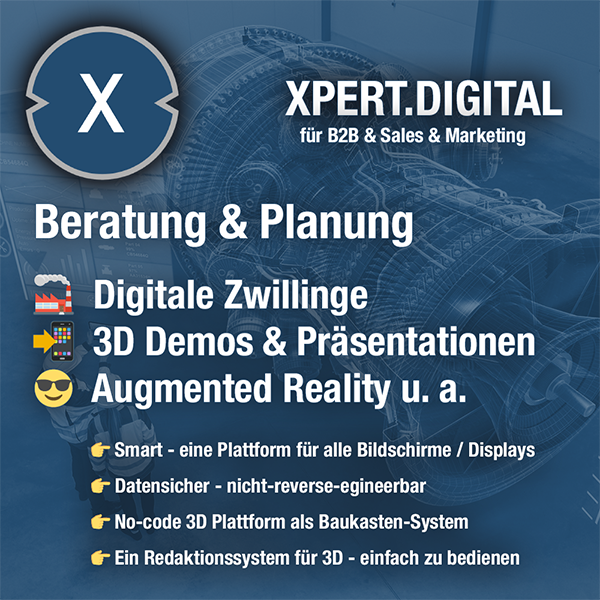
Industrial & B2B Business Metaverse: Reduce costs with XR technology for photorealistic product images (XR 3D rendering machine)
XR technology offers a superior solution for creating photorealistic images and allows companies to free themselves from the expensive fees of external media agencies. It is common knowledge that media agencies charge high costs to create such images as it requires expertise, special software and collaboration with various experts.
More about it here:
We are there for you - advice - planning - implementation - project management
Xpert.Digital - Pioneer Business Development
Smart Glasses & KI - XR/AR/VR/MR industry expert
Consumer metaverse or meta -verse in general
If you have any questions, further information and advice, please feel free to contact me at any time.
I would be happy to serve as your personal advisor.
You can contact me by filling out the contact form below or simply call me on +49 89 89 674 804 (Munich) .
I'm looking forward to our joint project.
Xpert.Digital - Konrad Wolfenstein
Xpert.Digital is a hub for industry with a focus on digitalization, mechanical engineering, logistics/intralogistics and photovoltaics.
With our 360° business development solution, we support well-known companies from new business to after sales.
Market intelligence, smarketing, marketing automation, content development, PR, mail campaigns, personalized social media and lead nurturing are part of our digital tools.
You can find out more at: www.xpert.digital - www.xpert.solar - www.xpert.plus




